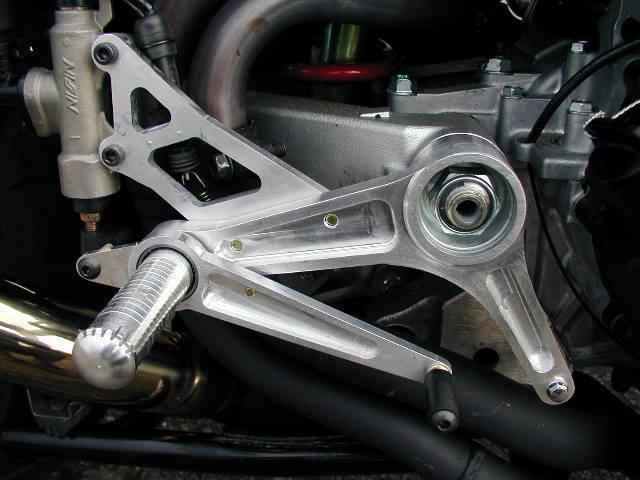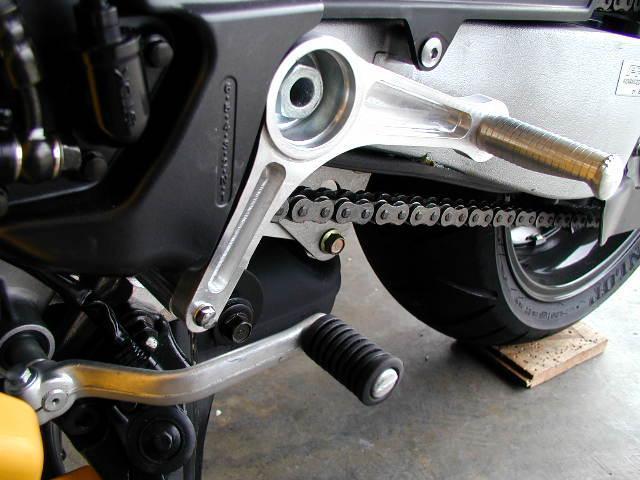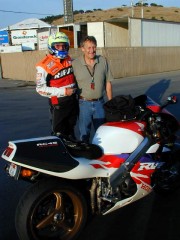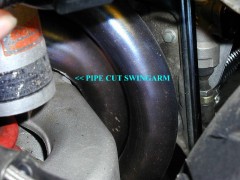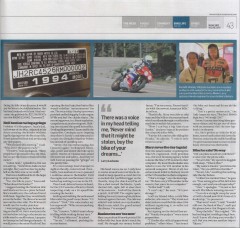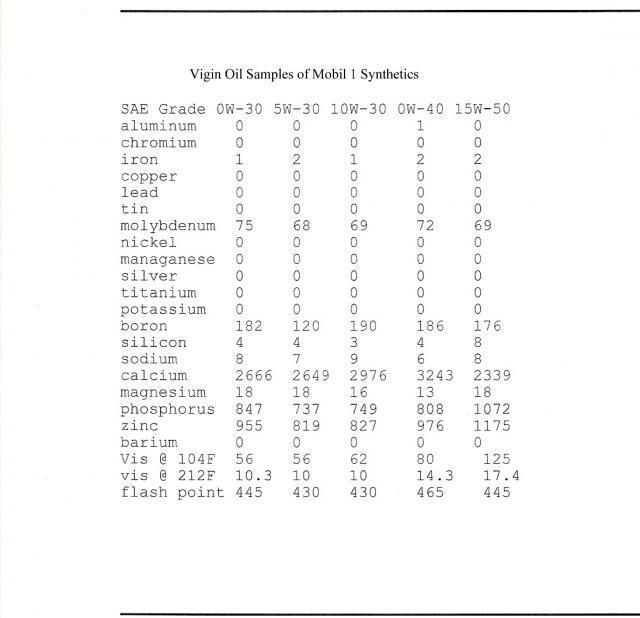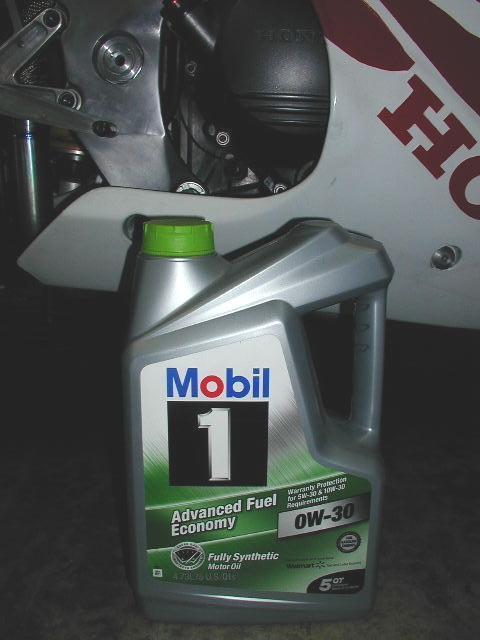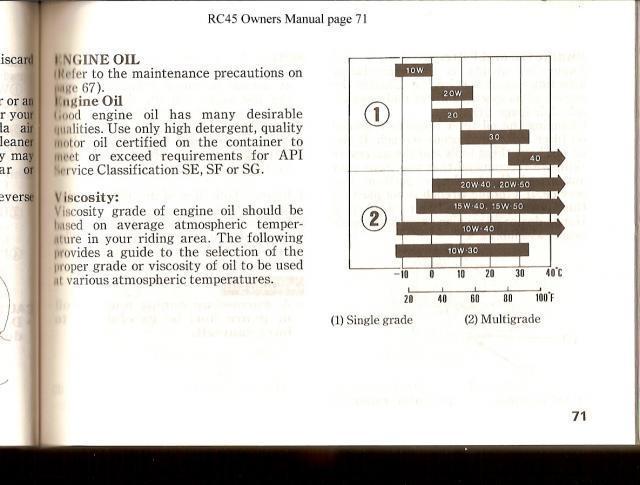-
Posts
2,401 -
Joined
-
Last visited
-
Days Won
45
Content Type
Forums
Profiles
Gallery
Blogs
Downloads
Events
Everything posted by BusyLittleShop
-
-
Impressive... you have gone quite a bit beyond the point where most of us would in customizing your ride... my question is are you saving any weight??? Rear sets I machined for Uncle Stan's VFR
-
From the album: Busy Little Shop
-
From the album: Busy Little Shop
-
From the album: Busy Little Shop
-
From the album: Busy Little Shop
-
From the album: Busy Little Shop
-
When my customers complain about shifting my experience it can be traced to clutch drag and not the oil... I doubt a rider can tell the difference in a BLIND shift test... usually a rider develops a feeling about an oil based on how enjoyable they are traveling down the perverted highway... like toilet paper you can roll freely or wipe sh*t off someone's A hole... So here's my method to check your clutch for drag... your gears can't shift smoothly if your clutch is part way engaged... 1 Place your bike on the center stand... 2 Start engine and establish a steady idle... 3 Squeeze in the clutch and hold... shift into first gear... 4 Now look at the rear wheel... if it's spinning step on the rear brake... does this action drag down the engine rpms??? If you bike is equipped with an cable then adjust the clutch lever knob clock wise (out) 1/4 turn and check again check for clutch drag... if you bike is equipped with hydraulics bleed system and check for bubbles... Ultimately you want the rear wheel to stop when the engine is idling and first gear selected with the clutch lever is squeezed in... In conclusion After 25 years dealing with customers I think its not a question of oil so much as a question of technique and clutch... My RC30 and RC45 customers will ask for the same slick shifting oil that made their friend's RC30 and RC45 shift so smoothly after it left the Busy Little Shop... I hate to break it to them but it wasn't the oil that made the difference it was rider technique and the elimination of clutch drag... so before I will dump one slick shifting oil for the next slick shifting oil I work with them on their technique and their clutch... then and only then will they understand that they were fooled into thinking it was the oil when in fact it was technique and clutch... I think we are after the same thing... smooth shift without upsetting the suspension... the secret is moving the foot quicker than clutch or throttle... go easy with the clutch and throttle but move your foot quicker... but worry there is no such thing as too quick... its early form of seem-less shifting...
-
Mercy... what in hell is an over weight car wheel doing on a VFR??? I'm going to have to report you to Honda for adding what amounts to a brick to their bike...
-
Thanks for the report... may I quote you in an another forum where they believe 0W30 is "horrible" for our engines???
-
Thanks... sus 62.9 is equal to the viscosity of 11.1 cSt
-
Good... what lab did the analysis??? and post them up for all to see...
-
How did you determine your oil lost a full grade in 1100 miles???
-
An oil that meets JASO-MA is considered appropriate for wet clutch operations. Oils marketed as motorcycle-specific will carry the JASO-MA label. A properly specified motorcycle oil will still allow for the appropriate lubrication and cooling of a motorcycle clutch, whilst maintaining 100% of the drive to be transmitted by the clutch, even under arduous operating conditions... Mr.RC45's tall first gear good for 90mph operates under arduous conditions on the street and track... and I'm here to report that Mobli 1 10W30 or 0W30 has maintained 100% of the drive of 116RWHP... so for all practical purporses I've meet and passed the MA clutch friction gate test... so do you still think 0W30 won't pass mustard with your VFR's clutch??? Techincally speaking straight dino oil employs heavy polymers but synthetics employ either light weight polymers or no polymers at all... Quote Oil Bible Unfortunately, because petroleum basestocks (dino oil ) are so prone to viscosity loss at high temperatures, high molecular weight polymers must be used. Since these polymers are more prone to shearing than lower molecular weight polymers, petroleum oils tend to shear back very quickly. In other words, they lose their ability to maintain their viscosity at high temperatures. Synthetic basestocks, on the other hand, are much less prone to viscosity loss at high temperatures. Therefore, lower molecular weight polymers may be used as VI improvers. These polymers are less prone to shearing, so they are effective for a much longer period of time than the VI improvers used in (dino) petroleum oils. In other words, synthetic oils do not quickly lose their ability to maintain viscosity at high temperatures as petroleum oils do. In fact, some synthetic basestocks are so stable at high temperatures they need NO VI improvers at all. Obviously, these basestocks will maintain their high temperature viscosities for a very long time since there are no VI improvers to break down. What year VFR was this and how did you note the obvious wear??? Did you Mic the cam to follow up your assumptions???
-
-
My choice would be either a 0 30 or 0 40 depending on coolant temps... never 15 50... Since 98 Mr.RC45 and Mobil 1 10W30 has gone through the summer months here in Ca with outside temps over 100ºF... this summer I shall run Mobil 1 0 30... my coolant temps stabilize between 212ºF and 230ºF... only at stand still do I see 230ºF but as soon as I drop the clutch the temps fall... I have over 55K miles on the clock and Larry Calamari is not known to ride in moderation... One rating to know is a Oils HTHS rating taken at 302ºF / 150ºC... HTHS stands for High Temperature High Shear and what it means is that if you somehow allow your engine reach 150c or 302F the 0 30 oil will flow at a viscosity of 3.06... but In order to run 302F our coolant systems would have to fail or we would be racing wide fooking open on a track... The thickness of moving oil is measured in centiStokes or cS. The motorcycle engineers design the pump and blow off so the ideal oil viscosity is around 10 cS at normal operating temp of 100c or 212F... The really thick multigrade oils such as 50Wt have a viscosity of 20 cS at operating temperature. Contrary what some people believe 50 is not twice as thick as 30, it is only 10 cS thicker... or 10 cS free flowing... As we increase the heat from 212 F to 302 F my recommended 30 wt oil thins from 10 cS to 3 cS... a 50w oil drops from 20 cS to 4 cS. Note that in a very hot engine the difference between the two oils is now only 1 - 2 cS. In other words they have about the same thickness. There is little advantage to a thicker based oil as a 15W-50 at very high temperatures... its a fact that the 4 cS oil is not twice as thick as the 2 or 3 cS oil. This difference is measurable but no cause for alarm... There is a huge advantage of using the free flowing 0W-30 at startup where 90 percent of the engine wear occurs. At 75 F the free flowing 0W 30 has a viscosity of 56 cS while the less flowing 0W 40 oil has a viscosity of 80 cS. The less flowing stuff is 24 cS slower. This is a much bigger difference than the .44 cS at HTHS...
-
I don't know the moly content of M1 0 30... but I've sent for a Blackstone test bottle to find out... Additives fall into several basic categories but Moly is the most often used friction modifier because it has such a high melting temperature (4730¯ F versus 2795¯ F for iron), it works great as a high-temperature, high-pressure antiwear agent. Some claim that because moly is so slick, it can cause clutch slippage... but note that 6 of the 19 motorcycle oils Sport Rider tested used moly including the HP4 market by Honda for any of their motorcycles...
-
Negative... synthetic oil does not accelerate failure... syn oil cools and prolongs our clutches... if you wish to note accelerated failure take it to the drag strip or race track...
-
True a straight weight 30 wether dino or synthetic does not use polymers to stay in grade but also true that synthetics multi grades use little or no polymers to stay in grade... the same can not be said about dino multi grades... their base stocks are usually a 10wt oil and employ polymers to flow like a 30 weight when hot... I confirmed with a Mobil 1 Technician that their 100% synthetic oils in grades 0 30 / 5 30 / 10W 30 are all essentially a 30 weight oil and can not be thinned by the action of shearing... this is good news for us with engines that share oil with the gear box... Water is a molecule... the size of the molecule does not change but the ability of water to flow does with temperature... H20 molecules can be hard as ice... flow free as water or seen invisible as vapor... but the size of the molecule does not altered its size... a 30 weight oil molecule is the same size cold or hot but its ability to flow is altered... cold it flows like molasses and hot it will flow like water... we can't lubricate our engines with oil that flows like molasses whereas we can lubricate our engines with oil the flows like water... we should take it as a good sign that our engines are protected by the hot flow of oil that reminds us of water...
-
The issue is the wet clutch. Friction reducers and a device that needs friction can be a bad combination! Negative... I've been using 10/30 Energy Conserving Mobil 1 since 98 in Mr.RC45 with no clutch slipping due to oil being certified 10% slipperier than non EC oil... and it's a bike with a tall first gear good for 90mph that's known to incinerate clutch plates... Whats confusing the issue is the fact that all motorcycle wet clutches will reach a point in their life and start to slip... so someone at some point in time added the EC 10% slipperier oil and got the clutch to slip... in error the oil was blamed and the "don't use EC Oil" myth was started... even the manufactures have gone along with the myth and didn't take the time to sort out the truth... In short a 10% slippery oil can not defeat a wet clutch... because our clutches are not within 10% of slipping to begin with...
-
It must be winter, the oil thread is getting active again (I like a good oil thread.) BLS, I have read your many posts about oil with interest. (Didn't we used to have a kind of bowing, 'I'm not worthy' emoticon? I wanted to insert that here.) I used to be a proponent of Mobil 1 red cap for motorcycles up until a few years ago when they reformulated (or, more likely, remarketed ...) their lineup. Since then I have tried various oils in my bikes but haven't found anything I like as much as I liked red cap. I am currently using the motorcycle-specific Castrol Actevo Xtra 4T 10W-40 semi-synthetic. I like it better in the VFR than the Castrol motorcycle-specific 10W-40 conventional oil I tried last time (the semi-syn is smoother shifting). But I still don't think it's as good as the old fully synthetic red cap. Do you endorse the above Mobil 1 0-30 Advanced Fuel Economy (which I assume is not bike-specific)? If so, I might give it a try next time around. I change my oil and filter frequently enough that viscosity breakdown from mileage is not a huge issue for me. My main concerns are smooth shifting, engine protection (antiwear) and cleaning (detergents). Thank you Belfry... I endorse 100% synthetic with a viscosity of 56 at start up and a viscosity of 10 at operating temps... I also endorse warming up your oil to operating temps before selecting first gear...
-
Wheel rotation is only normal if your oil is cold during start up but not when your oil is hot during operating temps...
-
Yes... but "Advanced Fuel Economy" is oil can marketing... its like gas pump marketing... you filter out what is important for your bike... namely that is its the freest flowing 30wt at start up... not to mention and that a freer flowing oil equals free HP because it produces less drag in your engine... Typically, synthetic oils sport a higher viscosity index. This is another reason why they are better suited for the wide range of temperatures and riding conditions associated with motor-cycle use. They require little or no Viscosity modifiers... synthetic oils typically will hold their viscosity grade longer and thus will rate a higher index number than non synthetic... If there is one thing a owner has control of its the viscosity of their oil... Mother Honda gives us the choice of either a 30 40 50 weight oil... that means a 0 40 is perfectly within the manual's recommendations... and if you ask me I will recommend 0 30... because flow is what lubricates our engines not pressure... an increased in flow is an increased in cooling by the oil... an increase in flow works harder to separate the engine parts that are under very high stress... all in all an 0 30 with a viscosity of 56 at start up and viscosity of 10 at operating temps works out better than 10w 30 or 10W 40 or even 20W 50 in the interest of engine longevity...
-
Thanks Miguel Whats interesting is that according to actual viscosity numbers published by the oil companies all 30wt oils have about the same viscosity at 212F operating temps... whether its a 0 30 or a 5 30 or 10 30 or even a straight weight 30 they all flow close to a viscosity of 10... but during start when the most wear occurs because we are spinning the crank on dry bearings the viscosity of 30 weight oils ranges from 56 (good) to 97 (poor)... it no secret that an 0 30 with a viscosity of 56 allows oil to flow to the critical dry bearings quicker than a straight weight 30 with a viscosity of 97... a 0 30 and a straight 30 are the same thickness at operating temps... it just 0 30 is refined higher to flow more during critical start... the proof in the numbers... the ability of 0 30 to flow quicker at start up before warm up is why I switched from a 10 30 to a 0 30 in Mr.RC45... So in the interest of longevity I use 0 30 EC oil and I warm the oil up to 212F before selecting first gear... Every oil company list viscosity of their oil at 2 temps 104ºF (40ºC) start temp and 212ºF (100ºC) operating temp... the lowest viscosity at start up reaches the critical bearings the quickest... Mobil 1 0 30 synthetic oil... At 40ºC / 104ºF viscosity = 56.7 At 100ºC / 212ºF viscosity = 10.3 Shell Rotella T 10W30 synthetic oil... At 40ºC / 104ºF viscosity = 83 At 100ºC / 212ºF viscosity = 12.1 Viscosity of straight weight 30 At 40ºC / 104ºF viscosity = 97 At 100ºC / 212ºF viscosity = 11.7 You can see what the problem with oil is... its too thick at start up temp and just right at operating temps... the lesson that should be learned is to idle the engine up to operating temp of 100ºC / 212ºF before selecting first gear if you wish to properly lubricate your engine...




